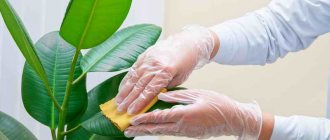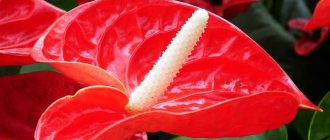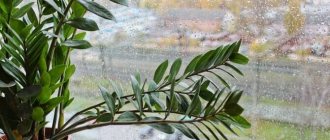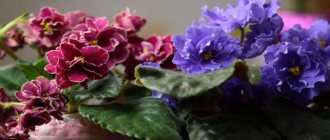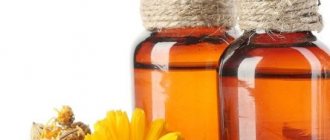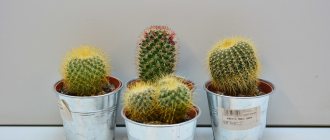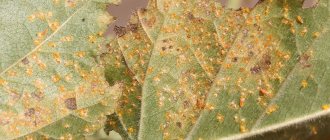From the photo of hypoestes you can see that this indoor plant differs from other flowers in its unique pink spots on the patterned leaves. The inflorescences of the crop are small and inconspicuous, so it is grown as an ornamental foliage plant.
Important! If the hypoestes does not receive the required amount of heat and light, the spots on the leaves will disappear and they will acquire a standard green color.
The natural habitat of the plants in question is considered to be the countries of southern Africa, as well as the subtropical zone of the island of Madagascar.
There are 150 types of such crops in nature, but no more than ten are grown at home. The plant goes well with various moisture-loving flowers and ornamental crops, including ferns.
The origin of hypoestes and its appearance
Hypoestes is a bright herbaceous representative of the Acanthus family. The homeland of the small shrub is the island of Madagascar, or rather its tropical rainforests. The plant also grows in tropical regions of Africa.
The homeland of hypoestes is the tropical forests of Madagascar
The plant is compact - 30 cm, but there are species that grow up to 60 cm and higher. It has highly branching, semi-lignified succulent stems. During the season, hypoestes is able to reach its maximum size.
Poestes stems branch well
Hypoestes is grown exclusively for its beautifully colored leaves. The main dark green background is decorated with spots of white, burgundy, and pink. If you form the bush correctly, it will be completely covered with lush, bright foliage. From a distance, hypoestes resembles fittonia.
Hypoestes and fittonia are somewhat similar
The oppositely located leaf plates of hypoestes are shaped like an egg with a pointed tip. They are attached to the stems by petioles. The leaf size is 7 - 10 cm. The edges are smooth or slightly jagged.
All the beauty of hypoestes is in its leaves
The flowers are small, tubular in shape. Collected into heads or half-umbrellas. Compared to the leaves, the flowering can be called modest. But the combination of purple flowers and vibrant greenery looks very harmonious.
Hypoestes flowers are unremarkable, although their color is very harmonious with the color of the leaves
Growing hypoestes at home is not difficult - the plant is unpretentious. But still, a tropical guest needs a special approach. Hypoestes will be an excellent decoration for small rooms, and not only residential ones. It looks great in flower arrangements. The plant is grown in the garden as a ground cover; regular pruning will help maintain the desired height of the colored carpet.
Florariums also cannot do without a bright representative of tropical flora. Hypoestes will get along well with companions and will be very comfortable in a specific microclimate. True, its rapid growth will have to be constantly kept under control.
Hypoestes feels great in the florarium
Types and varieties of hypoestes
Botanists have counted more than 100 species of hypoestes. But out of all the diversity, only 2 species took root in indoor conditions, which laid the foundation for a large number of new varieties of this beautiful plant.
| Types and varieties | Description |
| Hypoestes blood red | 50 cm evergreen subshrub. The dark green background of the leaves is enlivened by red peas and purple veins. The leaf blade is small - 8 cm long and 4 cm wide, and has an ovoid shape with slight wavy edges. The flowers are light purple with a white throat, small in size. |
| Hypoestes phyllospica | The small shrub is an evergreen. Purple-pink spots on a green background give the leaves an attractive appearance. Inflorescences are axillary, solitary. The flowers are painted in lavender tones. It is the progenitor of many varieties with different forms. |
| Hypoestes Pink Veil | The non-green surface of the leaf is scattered with many pink spots, which vary in shape and size. |
| Hypoestes Splash White | The leaf plate with a slightly wavy edge is painted white, on which green veins and edging are clearly visible. |
| Hypoestes Splash Pink | Light pink leaf with dark green edging and veins. |
| Hypoestes Confetti Red wine | Small crimson spots are scattered on the juicy bright green leaves. |
| Hypoestes spinous | Attracts gardeners with its dimensions - up to 1 m in height and 60 cm in width, and lush flowering. The flowers are colored in shades of pink and purple. The leaves are slightly drooping and green. |
Color extravaganza of hypoestes: photo
Hypoestes blood red
Hypoestes phylum Hypoestes rosea veil
Hypoestes Splash White
Hypoestes Splash Pink
Hypoestes Confetti Red wine
Hypoestes spinous
3.Varieties:
3.1.Hypoeates phyllostachya
An evergreen, perennial, herbaceous plant with a height of 30 to 60 cm. It has erect, branched, tetrahedral in cross-section, rigid stems. The leaves are thin, dark green, up to 5 cm long, on short petioles. The leaf blades are entire, have small white or pink specks on the surface. The leaves are arranged in opposite pairs. The flowers are very small, lilac, axillary, and often go unnoticed.
↑ Up,
3.2.Hypoestes phyllostachya Splash Select
A valuable decorative, deciduous, annual plant, the height of which ranges from 10 to 45 cm. The stems are erect, abundantly branched at the base, and rigid. The leaves are glossy, oblong-lanceolate, entire, on short petioles. The main tone of the leaf plates here is white, pink, red and burgundy. A green tint appears only near large leaf veins.
↑ Up,
Seasonal conditions for keeping the plant: table
| Season | Lighting | Temperature | Humidity |
| Spring | Tropical exotics are accustomed to bright light, which helps maintain the color of the leaves. But direct sunlight can leave unsightly burn marks. Therefore, south-east and south-west windows will be the ideal place for growing. The plant will also do well on southern windows, but during the midday hours the hypoestes should be covered from hot rays. The north side is not suitable for growing. To prevent the bush from becoming one-sided, it must be periodically turned to the light source in different directions. | Hypoestes loves comfortable warmth. During the period of active growth, the temperature should be between 22 – 25°C. If the heat intensifies, the plant begins to evaporate moisture strongly and weakens. In summer, you can take the hypoestes into the fresh air, hiding it from scorching rays and strong winds. | Ideally, the humidity should be slightly increased, because the plant comes from tropical areas. But hypoestes, especially new hybrids, can easily tolerate room air. However, it is better to surround the plant with comfortable conditions, especially when the thermometer exceeds 25°C. Spraying the leaves with settled water at room temperature and placing the pot on a tray with wet expanded clay will help protect the decorative appearance of fragile leaves. Also, in the summer, hypoestes will not refuse a shower. |
| Summer | |||
| Autumn | In winter, the hypoestes should be illuminated with a fluorescent lamp so that the daylight hours last up to 10–14 hours. The same should be done with plants that are grown away from the window. Due to lack of lighting, the colored spots of hypoestes turn pale, green color begins to dominate, and the plant loses its decorative appearance. | Winter temperature corresponding to normal development during this period is 17 – 20°C. A decrease to 10°C can cause the death of tender hypoestes. Sharp temperature fluctuations are not acceptable for the plant, as are drafts. It is advisable to protect from the proximity of heating devices. | |
| Winter |
In summer, hypoestes can be taken out into the open air.
The value of fittonia in indoor culture:
— Fittonia, or fitonia, is a very compact plant. Fittonia can be grown in a small pot that will decorate your desktop, a small shelf on the wall or a north window.
— Fittonia is shade-loving; it can be grown in the back of the room or on the north window, where nothing else grows.
Complete list of plants for northern windows>>>
— Fittonia is suitable for creating a decorative ground cover in tubs with large ficuses and palm trees, as well as for creating a green carpet in greenhouses.
— Fittonia is an ideal plant for florariums : it is compact, shade-tolerant and loves high humidity.
— Currently, decorative varieties with silver, green and bright brick patterned leaves have been bred. There are also varieties with a decorative wave along the edge of the leaf.
— Fittonia is easily propagated by cuttings or layering, as well as by dividing the bush.
Caring for hypoesthesia at home
Watering
The soil mixture in the pot should always be in a moderately moist state. In summer, watering should be plentiful. The following factors will have to be taken into account:
- small pot volume;
- loose soil that quickly allows moisture to pass through;
- increased air temperature.
Bringing together these points, we can conclude that in the summer you will have to water frequently. But before the next watering, the top layer of soil must dry thoroughly.
In winter, watering is reduced, but the soil is not allowed to dry out. It can lead to leaf loss.
You only need to water with soft, settled water at room temperature.
Hypoestes likes abundant watering in summer
Fertilizers
In the spring-summer period, once every 3 weeks, hypoestes is fed with mineral fertilizers for decorative deciduous plants. In winter, the frequency of applying nutrients is reduced, but fertilizers are not abandoned. To maintain vibrant leaf colors, nutrient mixtures must contain sufficient potassium. The nitrogen content in fertilizing should be minimal, otherwise the colored spots will begin to lose their brightness.
To maintain leaf color, the fertilizer must contain potassium.
How to care during the flowering period
Flowering occurs in summer and lasts throughout autumn, until December. If you take proper care, the plant will bloom very profusely.
Photo
This is what an indoor flower looks like in the photo, which has been properly cared for:
Photo of a flower grown outdoors:
How to deal with diseases and pests of hypoestes
The cheerful hypoestes has very good disease resistance. But some pests can visit it.
Diseases and pests, symptoms, control measures and prevention - table
| Diseases and pests | Symptoms | Control measures | Prevention |
| Root rot | The plant looks lifeless and drooping. Growth stops. |
you need to transplant it into a new substrate and treat it with Fitosporin.
the problem is too late and the flower dies, you can cut off healthy stems and root them. | Due to the thin and delicate root system, frequent waterlogging of the soil will lead to rotting of the roots. When watering, try not to get carried away and do not overwater the plant. |
| Whitefly | The leaves are covered with sugary secretions. The larvae, immovably attached to the plant, suck out the juice. The leaves turn yellow and their edges curl. | In case of massive damage, treat with one of the insecticides - Actellik, Fufan, Aktara, Decis. The concentration of the solution is prepared strictly according to the instructions. Work only outdoors or indoors with an open window. Apply personal protective measures. The drugs are toxic! |
and temperature.
catching butterflies.
Spray the plant with garlic water - crush half a head of garlic, add 1 liter of water and leave for 4-5 days. Use 1 tbsp of infusion per 2 glasses of water. |
| Spider mite | Nutrients are sucked out along with the juices. The plant is weakening. The pest can be easily identified by the thinnest web on the plant. |
plant under a warm shower.
using a napkin soaked in a solution of laundry soap.
leaves with tincture of pharmaceutical calendula. | |
| Aphid | The smallest insects can quickly form entire colonies. Sucking the juice from the plant. The leaves curl and sticky drops appear on them. | ||
| Mealybug | They feed on the juices of the plant, which is why it stops its growth. A cotton-like coating appears on the leaves and shoots. |
Possible growing problems
- Leaf plates wrinkle - too dry air or too much direct light.
- The specimen drops its leaves - placed in a draft, lack of watering, a sharp drop in temperature or kept too cold.
- If the tips of the leaves dry out, it is necessary to increase the humidity in the room.
- Withering of leaves and their yellowing - the plant is overwatered, especially against the backdrop of cold temperatures.
- The leaves become spotted and turn pale - there is not enough light or there is an excess of soil nitrogen.
- Brown spots on the leaves are the result of sunburn.
Despite the bright, alarming color of the foliage, the plant is not at all poisonous.
Reproduction methods
There are only 2 ways to propagate hypoestes - seeds and cuttings.
Sow the seeds
You can purchase different varieties in the store and start sowing in early spring - in March. There is no need to soak the seeds.
- Prepare a bowl with a mixture of peat and sand, taken in equal parts. Moisten the substrate.
- Sow the seeds and sprinkle a little of the remaining mixture on top.
- Cover the bowl with a bag or glass jar to create greenhouse conditions inside.
- The place for germination should be cool - from 13 to 18 ° C and dark.
- Do not forget to ventilate and moisten the greenhouse.
- When the first shoots appear, the greenhouse is placed in a lighter place.
- After several leaves appear, the seedlings dive into the substrate for adult plants.
After several leaves appear, the seedlings dive into the substrate for adult plants
- After 3 months, you will receive young and strong plants that can be transplanted into separate pots or arranged by variety to create flower arrangements.
After 3 months, the seedlings turn into young plants
Rooting cuttings
Propagation by cuttings is the simplest and most common method. It can be used at any time. Of course, the speed of root growth still depends on the time of year, but this is not critical. You can root in water and in soil mixture.
- There should be at least 2-3 nodes left on the cut cuttings.
There should be at least 2 - 3 nodes on the cutting
- Place the cutting in water, to which you can add a little activated carbon.
- Roots appear very quickly.
- When a sufficient volume of root mass has grown, you can plant the cuttings in a separate container.
You can try to root it in the substrate.
- Cut off the selected cutting.
- Plant in prepared substrate.
- Water and cover with a jar or bag.
- Temperature not lower than 22°C.
- After a week, rooting will occur and the jar can be removed.
Hypoestes cuttings root well directly in the soil


